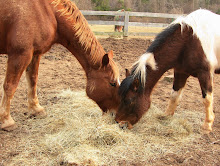2400 Years Experience Teaches Correct Seat a Must
by
Jan Dawson
President, AAHS
[reproduced from Caution:Horses, Vol. 4, No. 4, Winter 1999]
by
Jan Dawson
President, AAHS
[reproduced from Caution:Horses, Vol. 4, No. 4, Winter 1999]
As I sit here at my desk writing the last "Harmony" of the millennium I wait for a profound inspiration, something to match the Y2K frenzy all around me. The same theme keeps coming back to mind. Our history with horses is over two millennia long. If we read the earliest Greek horse volumes we see nothing surprising, nothing that would not fit in with today’s better training. Even in today’s industry, few people will say that a horse can be finished in any discipline in less than five years, and that is if all goes well. Yet the market, both book and video, is filled with offer of the quick fix. I still believe that the quickest fix is the classical fix.
Before I get letters from half of the Western riders in the country let me explain, first, about Western riding. The first horned saddles belonged to the Californios and their vaquero counterparts in Mexico. Working cattle "a’horseback", as Ray Hunt says, began in the West and went East. So where did they learn? It had to be in Mexico but from whom. Maybe the vaqueros but then who taught them? Where did those wonderfully trained horses come from?
The truth may cause a bad day in Black Rock but it all stems from the Spanish dressage school. Remember that on the Iberian peninsula they have worked cattle from horses for centuries. They have fought bulls from horses. They have fought wars from horses. I would suggest that if there were a quick fix we would have found it by now.
In the cavalry if a man’s horse went lame it might well mean his death. If he killed his horse he likely was not issued another unless he was under threat of capture or some other mission warranting extreme sacrifice when his horse went down. I have met some cavalry officers who fought with their horses in W.W.II. One of these men credits a horse for saving his life three times. These men are the most respectful horsemen I have ever seen.
On the old ranches, the cowboy who injured or used up horse after horse was not well thought of and finally would have been either fired or given another job not involving horses. Many bosses did not give even a second chance.
The point I would like to make is this. At the most sophisticated levels of riding where the horse and rider seem to be moving as one it cannot be doubted that the horse is responding principally to the rider’s seat. This is as true of reiners and top western pleasure riders as to dressage riders. The relationship is such that the rider may say, "All I have to do is think canter and Blaze does it." (italics added by Loretta Arey) Imagine if that applied to speed, turns, changes of gaits, all of it.
Would you believe that the Grand Prix Dressage test used to require half to be ridden one handed? Think about it. If you have your gun and saber drawn that leaves basically your seat to control your horse and if you don’t get it done, you will be left on the battlefield.
But look at what we see so many places - instead of training we see the spur ‘n jerk method of horsemanship. And like I said, the roots of Western were classical and refined.
So where do we place the blame? Quite frankly I place it on the old Hollywood movies which not only originated the "Show’em Whose Boss" school of riding but can also be credited with the beginning of the idea that we all get up after a fall.
In good riding, in any discipline, the seat is everything and on the best of days this is an extremely dangerous sport. We are more likely to get hurt on our horses than we would be to get injured from skydiving or bungee jumping.
Having the good balanced seat improves our horses and makes us safer - so why do so many try to avoid what is an inevitable part of quality riding? Anyone can learn to have a good seat - yes, anyone - but no one can ride effectively without it.
The best part is that the horse is born with the responses built in - it just takes practice to train him to ignore the rider. And you can bet that the same rider who systematically "trains" his horse not to respond will thump on him later for not responding or for making a mistake.
My wish for the Millenium - humane riding in which the rider listens to his horse and teaches the horse to listen to him by softening when the horse responds.
The seat is the most important part. We teach the rider to sit, to utilize the aids, and finally to listen to his horse. That is basically all there is.






